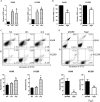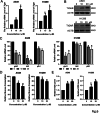TIGAR inhibits glucose-metabolism and cisplatin-chemosensitivity in human lung cancer cells
- PMID: 40719984
- PMCID: PMC12304353
- DOI: 10.1007/s12672-025-03274-9
TIGAR inhibits glucose-metabolism and cisplatin-chemosensitivity in human lung cancer cells
Abstract
TIGAR is an important factor associated with tumor glucose metabolism, but its function and underlying mechanism in human lung cancer remains unclear. Here, we analyzed the expression changes, prognosis, genetic alteration, related gene networks and metabolic pathways of TIGAR in lung cancer. The findings revealed that TIAGR level was augmented in LUAD and LUSC in comparison to the normal lung tissue. In addition, high TIAGR level was related to poorer outcome of patients with LUAD. Different alterations in TIGAR gene at various sites were observed in both LUAD and LUSC. The GO/KEGG analyses indicated that TIGAR affects the occurrence and progress of lung cancer through multiple metabolic pathways. Further, we established lung cancer cell models with TIGAR knockdown or overexpression to explore its effects on glucose metabolism, apoptosis and chemosensitivity. Our results indicated that TIGAR markedly inhibited glucose metabolism, ROS production, and susceptibility of lung cancer cells to cisplatin. Together, TIGAR plays a cancer-promoting role in lung cancer, which becomes a promising prognostic and therapeutic biomarker.
Keywords: Bioinformatics; Chemosensitivity; Lung cancer; Metabolism; TIGAR.
© 2025. The Author(s).
Conflict of interest statement
Declarations. Ethics approval and consent to participate: Not applicable. Consent for publication: Not applicable. Competing interests: The authors declare no competing interests.
Figures







Similar articles
-
Caveolin-1 inhibits the proliferation and invasion of lung adenocarcinoma via EGFR degradation.Sci Rep. 2025 Jul 1;15(1):21654. doi: 10.1038/s41598-025-05259-8. Sci Rep. 2025. PMID: 40594106 Free PMC article.
-
Bioinformatics analysis of BTK expression in lung adenocarcinoma: implications for immune infiltration, prognostic biomarkers, and therapeutic targeting.3 Biotech. 2024 Sep;14(9):215. doi: 10.1007/s13205-024-04053-z. Epub 2024 Aug 28. 3 Biotech. 2024. PMID: 39220827
-
Mitochondrial Pyruvate Carrier 1 as a Novel Prognostic Biomarker in Non-Small Cell Lung Cancer.Technol Cancer Res Treat. 2024 Jan-Dec;23:15330338241282080. doi: 10.1177/15330338241282080. Technol Cancer Res Treat. 2024. PMID: 39360506 Free PMC article.
-
Signs and symptoms to determine if a patient presenting in primary care or hospital outpatient settings has COVID-19.Cochrane Database Syst Rev. 2022 May 20;5(5):CD013665. doi: 10.1002/14651858.CD013665.pub3. Cochrane Database Syst Rev. 2022. PMID: 35593186 Free PMC article.
-
A rapid and systematic review of the clinical effectiveness and cost-effectiveness of paclitaxel, docetaxel, gemcitabine and vinorelbine in non-small-cell lung cancer.Health Technol Assess. 2001;5(32):1-195. doi: 10.3310/hta5320. Health Technol Assess. 2001. PMID: 12065068
References
-
- Sung H, et al. Global cancer statistics 2020: GLOBOCAN estimates of incidence and mortality worldwide for 36 cancers in 185 countries. CA Cancer J Clin. 2021;71(3):209–49. - PubMed
-
- Bray F, et al. Global cancer statistics 2018: GLOBOCAN estimates of incidence and mortality worldwide for 36 cancers in 185 countries. CA Cancer J Clin. 2018;68(6):394–424. - PubMed
-
- Torre LA, et al. Global cancer statistics, 2012. CA Cancer J Clin. 2015;65(2):87–108. - PubMed
-
- Hanahan D. Hallmarks of cancer: new dimensions. Cancer Discov. 2022;12(1):31–46. - PubMed
Grants and funding
LinkOut - more resources
Full Text Sources
